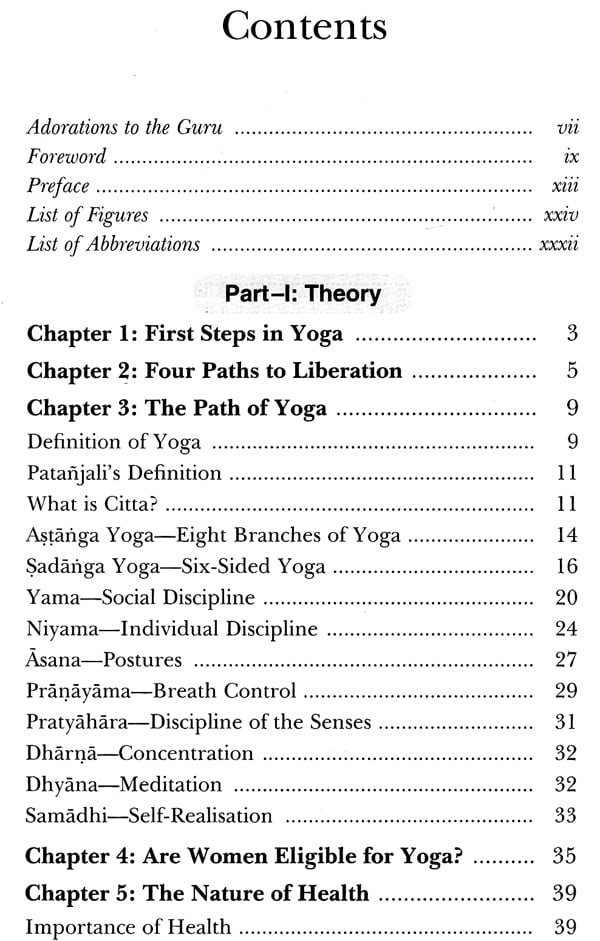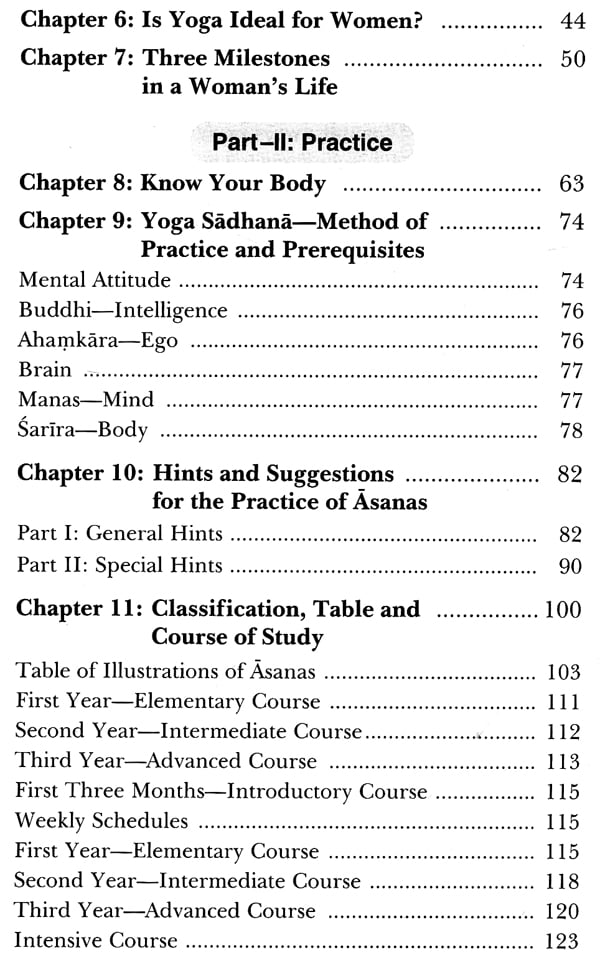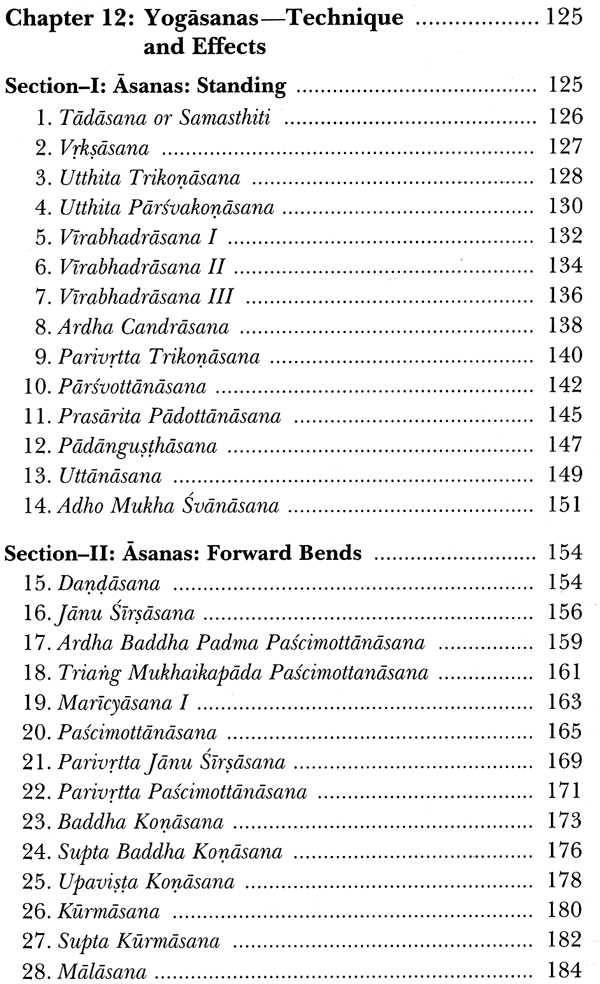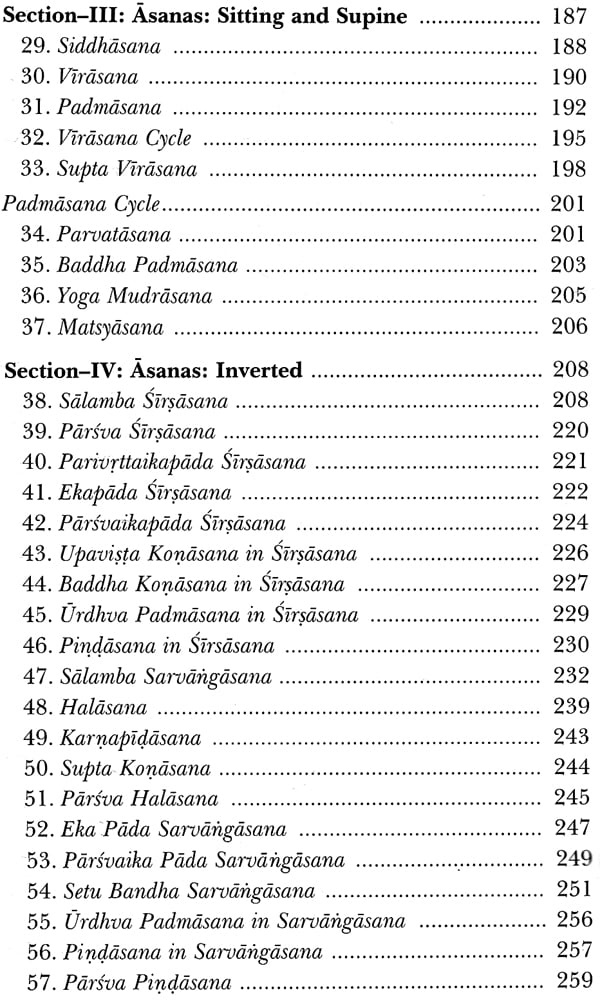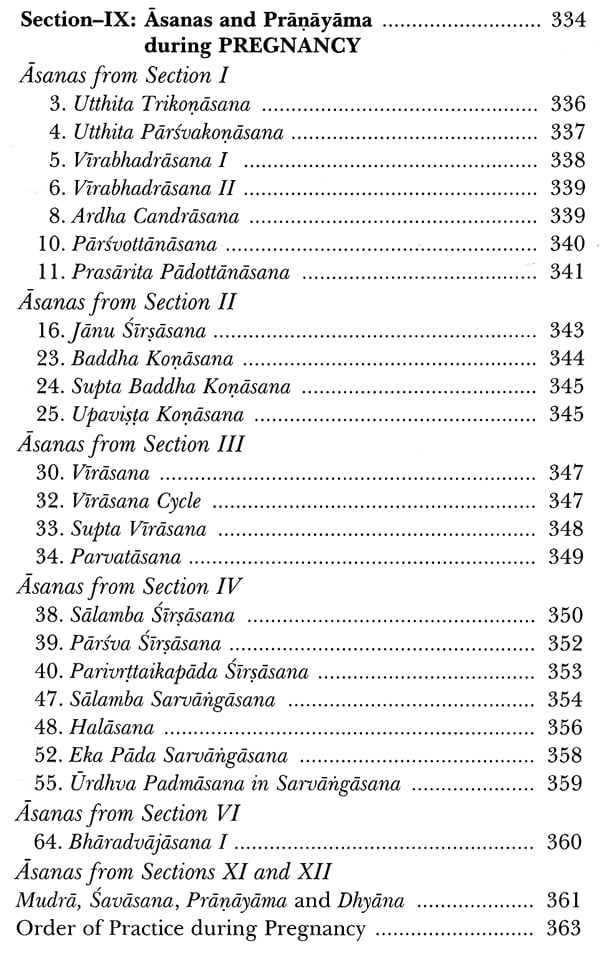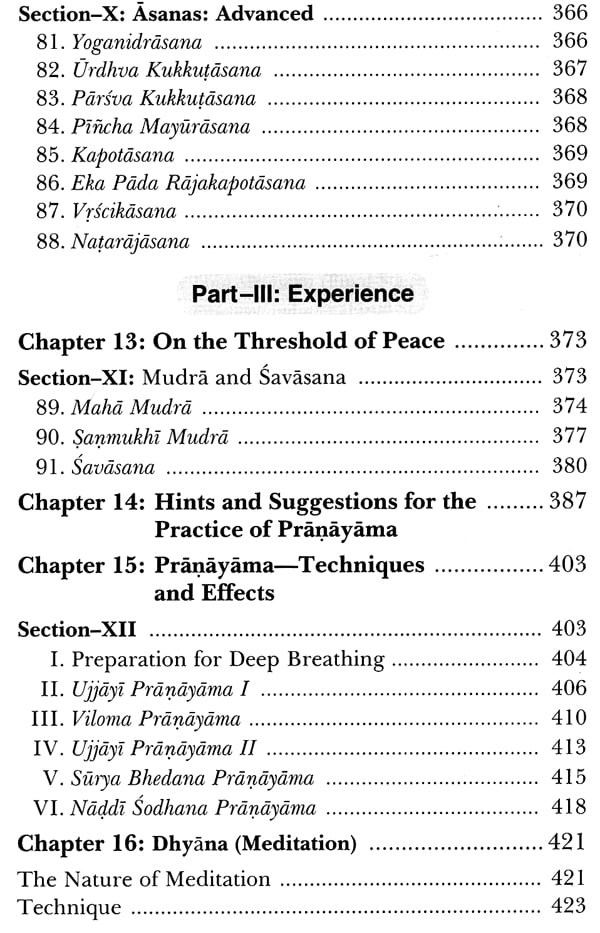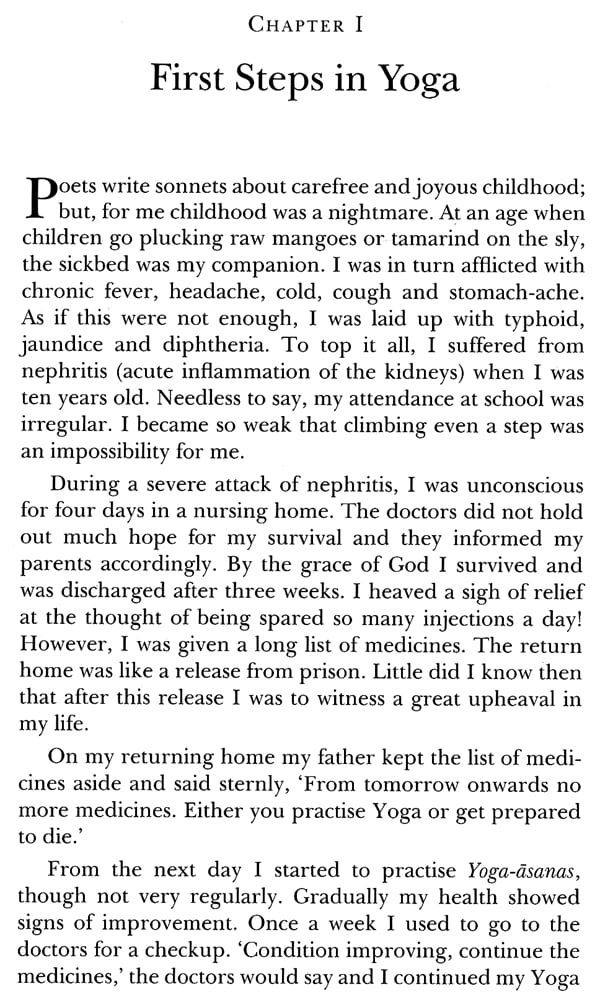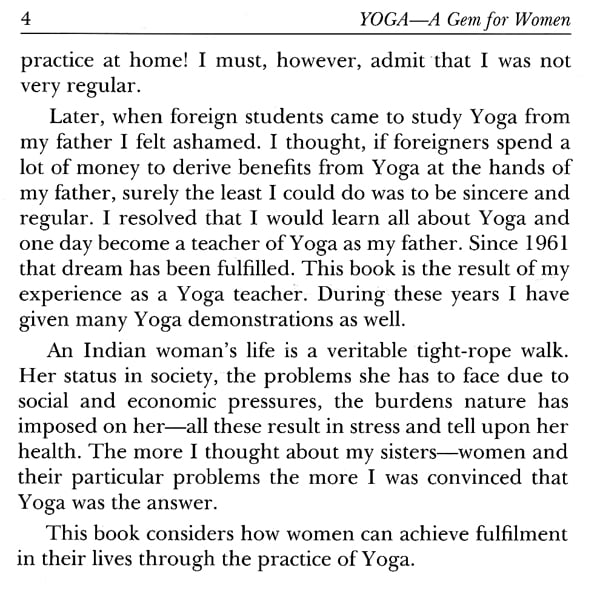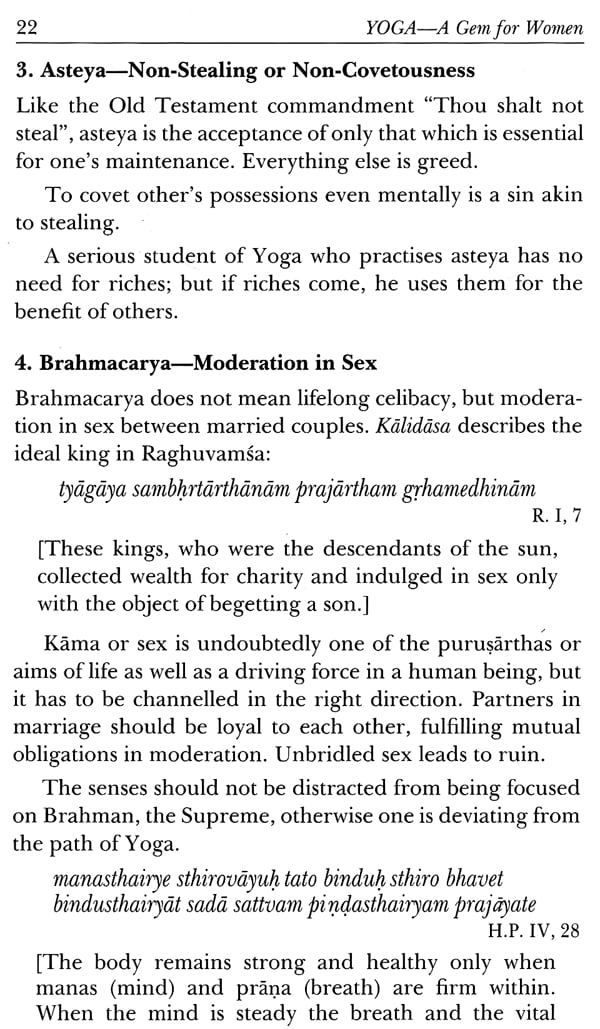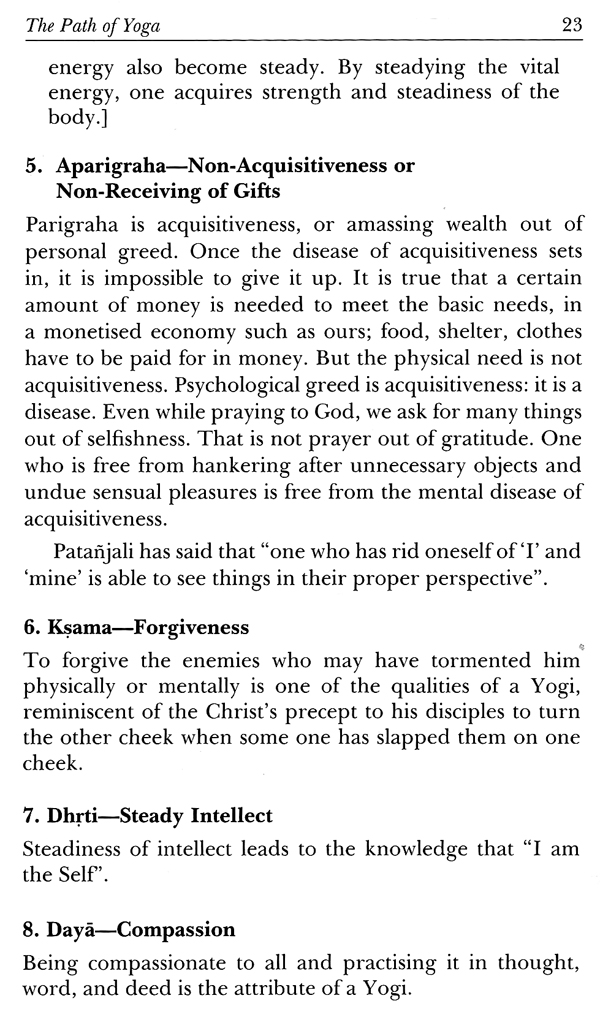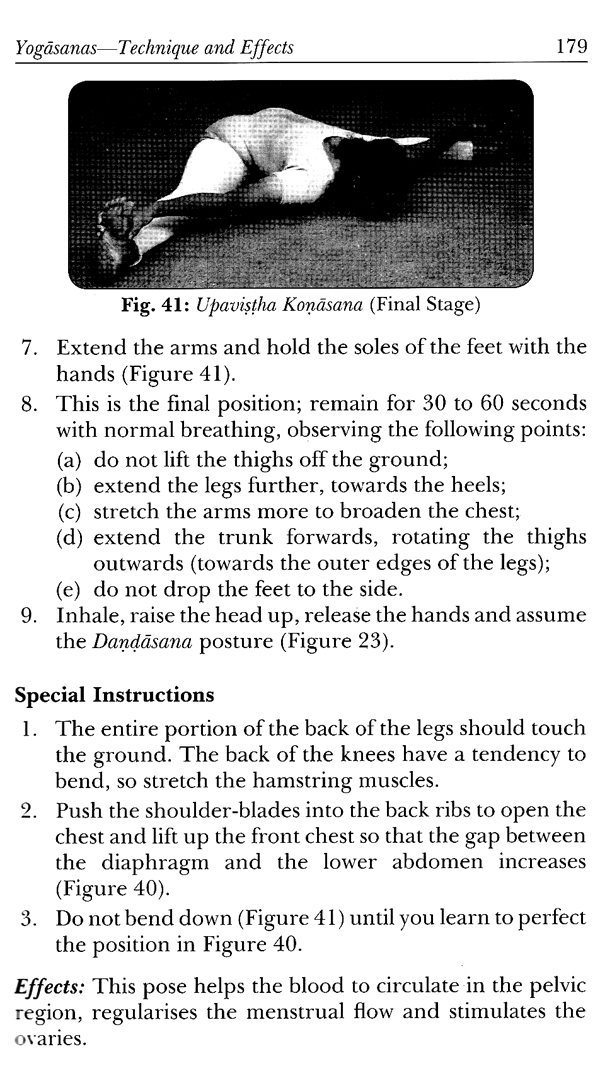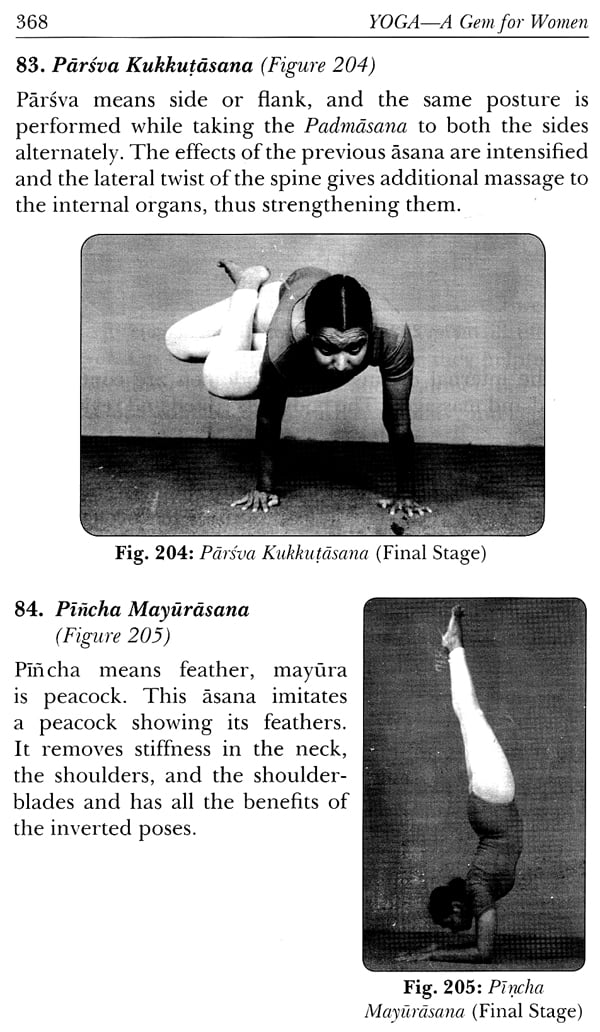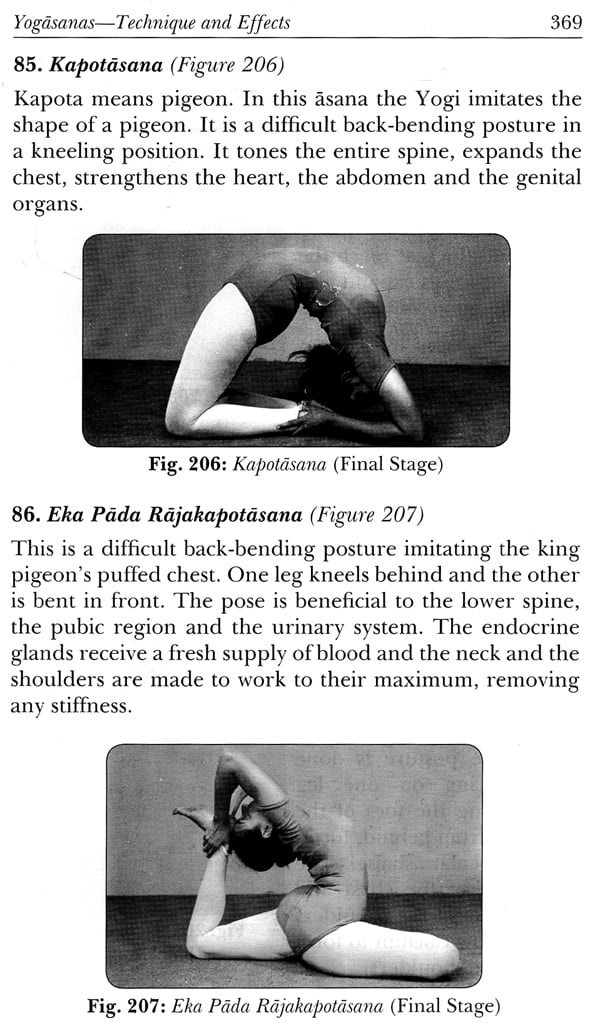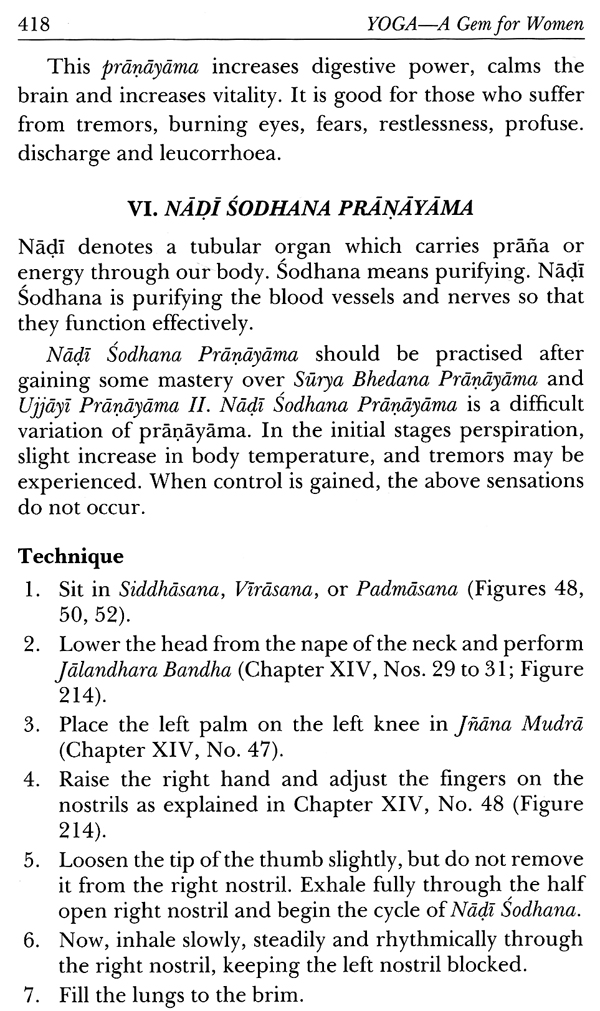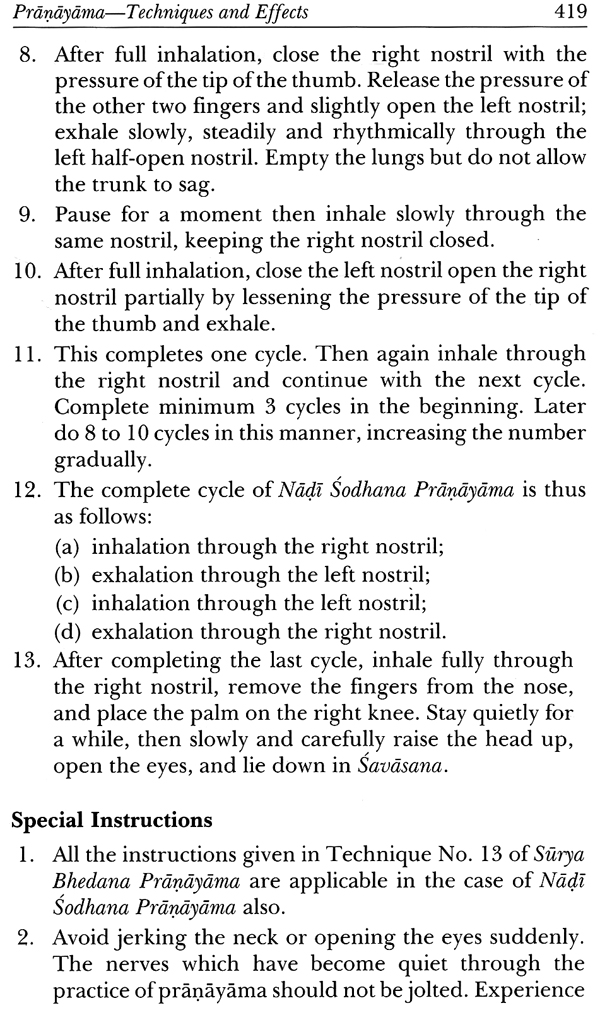
Yoga- A Gem for Women
Book Specification
| Item Code: | NAU675 |
| Author: | Geeta S. Iyengar |
| Publisher: | Allied Publishers Pvt. Limited |
| Language: | English |
| Edition: | 2013 |
| ISBN: | 9789387997844 |
| Pages: | 465 (Throughout B/W Illustrations) |
| Cover: | PAPERBACK |
| Other Details | 8.50 X 5.50 inch |
| Weight | 640 gm |
Book Description
YOGA is considered uniquely Instrumentalln the search for self : reahsatlon, and through It the retaliation of God. The author, who has mastered the subtle techniques of this art, has presented it in book form, showing a variety of asanas known for their physical and curative values, Pranayama with its Bandhas and Dhyana or meditation.
The asanas In the book are divided Into various sections dealing with simple' standing positions, forward bends,lateral movements backward extensions of the spine, correct breathing techniques during the performance of the asanas and also the effects of the asanas on the body, nerves and mind. The author has Included simple steps for advancing from a purely physical plane to a ' higher level of consciousness. Almost all the illustrations In the book are her own.
GEET A IYENGAR has inherited the gift of Yoga from her distinguished father Sri B.K.S. lyengar, who is a Yoga exponent of world repute, known for his vast knowledge of the subject and his performing skills. She has been teaching Yoga since 1962 in Pune. A graduate in Philosophy and Vaidya Visharad, her .knowledge of Ayurveda blended with her knowledge of Yoga, makes her an expert guide for students. She is one of the partners of the Ramamani lyengar Memorial Yoga Institute. Geeta Iyengar has travelled extensively to propagate Yoga In India and abroad. She has also written widely on the subject and thus occupies a distinguished place in a field where few women have achieved proficiency. This authoritative book on Yoga for women has been translated into more than half a dozen European languages.
I was in two minds when both the publisher and the author insisted that only I should write the foreword to this book. The author, Miss Geeta S. Iyengar, is first my daughter, and secondly my pupil. Her filial piety naturally persuaded her to seek the blessings of her parent and even more of her preceptor. Then, the director of the publishing company is my friend as well as my pupil. I could not but accept and write the foreword so as not to sunder the bond between us. Though I am filled with joy that my daughter has made a maiden attempt to write about the disciplines and practices of Yoga for the benefit of her sisters, I have to assess her work in its true perspective, lest what I say may be misconstrued as an expatiation of my daughter's work rather than a dispassionate review and appraisal of its merits. No doubt Yoga is my very breath. My life and my very Being are soaked in its art, science, and philosophy.
Although Geeta observed my practices and my teaching of Yoga, she showed no inclination or desire to make a beginning. Her interest arose when she was struck with nephritis. Her ailment became almost fatal when medical treatment produced no signs of progress. As a hapless parent, I could see no way to pay for the inexhaustible list of medicines with my meagre finances. Then I placed a choice before her: either to embrace Yoga, the only panacea for her, or to live until her disease took its toll. Though young in age - barely ten years - she understood my ultimatum and made up her mind to take to Yoga. She gained confidence in herself and dedicated her life to the practice of Yoga. Since then she has undergone rigorous training and has mastered this difficult art. A devoted student, she diligently practised day and night with attention and has been teaching others since 1961. This book is the outcome of her training and experience.
Yoga has a unique place in the search for Self-realisation and through it, God-realisation. Our body is a repository of the faculties of the mind, the intelligence, and the soul. In order to extricate the body from the tangle of diseases, the emotional disturbances of the mind and the ruffled intellect need to be transformed to the level of perfect consciousness devoid of prejudices and dualities. Then only the body of the practitioner becomes a worthy abode for that pure consciousness to dwell in. This is the aim of the book.
Having mastered the subtle techniques of this art, Geeta has presented it, highlighting the importance of Yoga in a woman's life, and giving a variety of asanas with their physical and curative values, Pranayama with its Bandhas, and Dhyana - meditation. Their practice will enable the aspirants to lead a peaceful and contented life. Very few women have obtained proficiency in Yoga. Geeta occupies a unique place and is recogntsed for her knowledge of the art and for her skilled performance. She is a source of inspiration for others to emulate.
Her contribution in Yoga for girls and women lies in the lucid explanations of the terse movements in a lucid style. The asanas, involving subtle movements, and Pranayama, regulating the flow of energy, act rhythmically on the anatomical, physiological, psychological, and spiritual functions of the human body. She is able to guide students from her knowledge of Ayurveda blended with her knowledge of Yoga. She has given practical steps for advancing from a purely physical plane to a higher level of consciousness. Even from a material standpoint the book aims to help women who are under physical and mental pressure and working for their living. They may be busy housewives or mothers who have to look after the home when they return from the office or the factory. In this age of economic pressures and rapid social and cultural changes, women have to playa very difficult and arduous role. Exposure to the constant stresses and strains of modern life jeopardises their health and mental peace; this plays a decided role in determining the quality of their children, as the 'role of the mother is so important. This peace and health can be achieved without the aid of drugs and tonics but through Yoga. It is the answer to health, calmness of nerves, alertness of mind, and ultimately of spiritual repose.
The author has divided the Asanas into various sections dealing with simple standing positions, forward bends, lateral movements, backward extension of the spine, correct breathing techniques during the performance of the asanas, and giving the effects of the asanas on the body, the nerves, and the mind. This guides the reader step by step in the practice of Yoga. Almost all the illustrations in the book are her own.
The author has also explained how Yoga can be practised in the absence of a teacher. In the section on 'Yoga Kurunta' (Yoga Self-Taught) she has explained with illustrations the various techniques for correct practice in order to help women who cannot attend classes. The devices are very simple: a rope, the support of a wall, and a low-level stool or bench. It is also interesting to see that she has introduced about twenty illustrations of her sister, Mrs. Vanita Sridharan. They were taken during advanced pregnancy in order to instil confidence among women to practise Yoga even while pregnant. She has also included illustrations of a few complicated Asanas to show that the women can do them without suffering any adverse effects.
The general notion is that Yoga is not intended for women. It is fallacious and it underrates the moral, intellectual, and spiritual legacies to which women are entitled as much as men. The author has shown that Yoga can be taken up by women, in the manner in which other subjects, such as law, history, philosophy, science, engineering, medicine, etc., are offered by Universities. Multitudes of women are seen nowadays who equal and excel men in every faculty. More women can now come forward and strive to attain new heights to enrich Yoga, which is one of our ancient heritages.
I shall feel amply rewarded if this book is well received by all and particularly by women for whom it is written.
When Mr. P.H. Patwardhan of Orient Longman published Yoga Dipika, the Marathi edition of my father, Sri B.K.S. Iyengar's book Light on Yoga, he strongly urged me to write in Marathi a book on Yoga for Women.
For a long time I hesitated, but he continued to press me. I felt I had neither the intellectual ability nor the moral courage to write a book, particularly on Yoga with special reference to the needs of women; but here a pat of encouragement came from my mother - Amma as I used to call her: 'You must write the book,' she said, 'but not to parade your intellectual attainments. God has given Yoga as a priceless gift for women, and this you must reveal to the world.
Her remarks, born out of her experiences in life, were of more value to me than my knowledge obtained from books. My mother was a saintly woman and led a life of high moral ideals. She did not lecture us on what we should do, but Jnana (Knowledge), Bhakti (Devotion), Karma-Ibense of Duty), and Yoga were expressed in her everyday life and actions. She was an example to us all, the embodiment of pure womanhood. This book is the outcome of my mother's encouragement. With humility, I wrote a few chapters and gave them to Mr. Patwardhan for his comments. He approved the language as well as the presentation and encouraged me to continue. It took me a few years to complete the book. When it was ready, he suggested that I give an English version of the Marathi original, so that its benefits could be shared by women all over the world. His suggestion was too novel for me to say 'yes' immediately, as I had my limitations in the English language and had to borrow the services of an interpreter to convey my thoughts and experiences accurately in that language.
I approached my friend Mr. P.R. Shinde to translate my book, but he was hesitant. 1 tried others, but no-one else was able to undertake the work. Finally, Mr. Shinde allowed himself to be persuaded and translated the book. He has done so creditably, retaining all the original cadences, and I am grateful to him. I am also thankful to Mr. Patwardhan, but for whose insistence this book might not have seen light.
Before venturing to write this book, I pondered over the present-day economic and social conditions of women contrasted with those of centuries ago. The social and political environment, status, and economic conditions of women years ago led them to a simple life; they were not subjected to the same pressures that burden the women in all walks of life today. Now every item of need has become an indispensable factor of life which is often beyond one's capacity of acquisition. The economic situation has compelled women to contribute an equal share in order to stabilise living conditions and to avoid present as well as future anxieties. She now has to do the double work of having to meet financial pressures and maintaining harmony in the family. It is necessary for her to keep perfect health and harmony to withstand the stresses and strains of life. Yoga is capable of giving this needed relief if she devotes a little of her time daily to its practice.
Rarely does a pupil find the Guru and the Father in one person. I consider myself doubly fortunate in this respect. Anna - my father - is my Guru. Never did he inflict his opinions or thoughts on me, nor did he try to impose the Yoga Sadhana on me. There was no compulsion or duress. Yoga was my free choice. Verily, I learnt Yoga from him. While teaching me Yoga, he treated me not as his daughter, but as a pupil. I know that he is very exacting as a teacher. He is a stickler for discipline and a taskmaster; but his ways are gentle persuasion and not stern reprimand. He expects discipline and keen attention from his pupils. Is not Yoga Sadhana the greatest of disciplines? The fact that life is an admixture of happiness and sorrow cannot become untrue. It should be so, as otherwise life has no meaning and becomes a dead matter. Yoga makes one face both happiness and sorrow with equanimity. So, I am overjoyed in presenting my book Yoga - A Gem for Women before my readers, yet my joy is tinged with an imprint of sorrow as my mother is no longer in this world to share in my joy, for it was she who ferried me to a higher shore by example and precept. It is impossible for me to repay the debt of gratitude of my father and mother who became my Gurus, except to follow forever and sincerely the path of Yoga taught by them.
This book is written with my many years of experience and observation but with one objective - to meet the specific needs of women. It does not however, preclude men, as Yoga is useful for both women and men. The book describes simple techniques of Yoga for women and I am happy to be able to share my experiences with my sisters through this presentation.
I am grateful to Mr. Mohan Welling, who took great pains in taking all the photographs and placing his studio at my disposal.
I am thankful to Miss Ramanben Moti for drawing the anatomical charts for the book.
My brother Prashant and sister Mrs. Vanita Sridharan gave me immense help. Besides helping with the script, Vanita willingly agreed to be photographed for the book depicting Yogasanas during her period of pregnancy. These are valuable photographs and will encourage women to practise Yoga even while pregnant.
I am indebted to Mrs. Silva Mehta for helping me in re-editing the script and Miss Srimathi Rao for typing the final script. My thanks are due to my father, Sri B.K.S. Iyengar, and to Harper Collins Publishers, U.K., for allowing me to make use of a number of references from the book Light on Yoga and Light on Parnayama. I am indebted to Messrs. Allied Publishers Ltd., New Delhi, for publishing this illustrated book and presenting it to the world-wide public, particularly to my sisters in the East and the West.
**Contents and Sample Pages**
